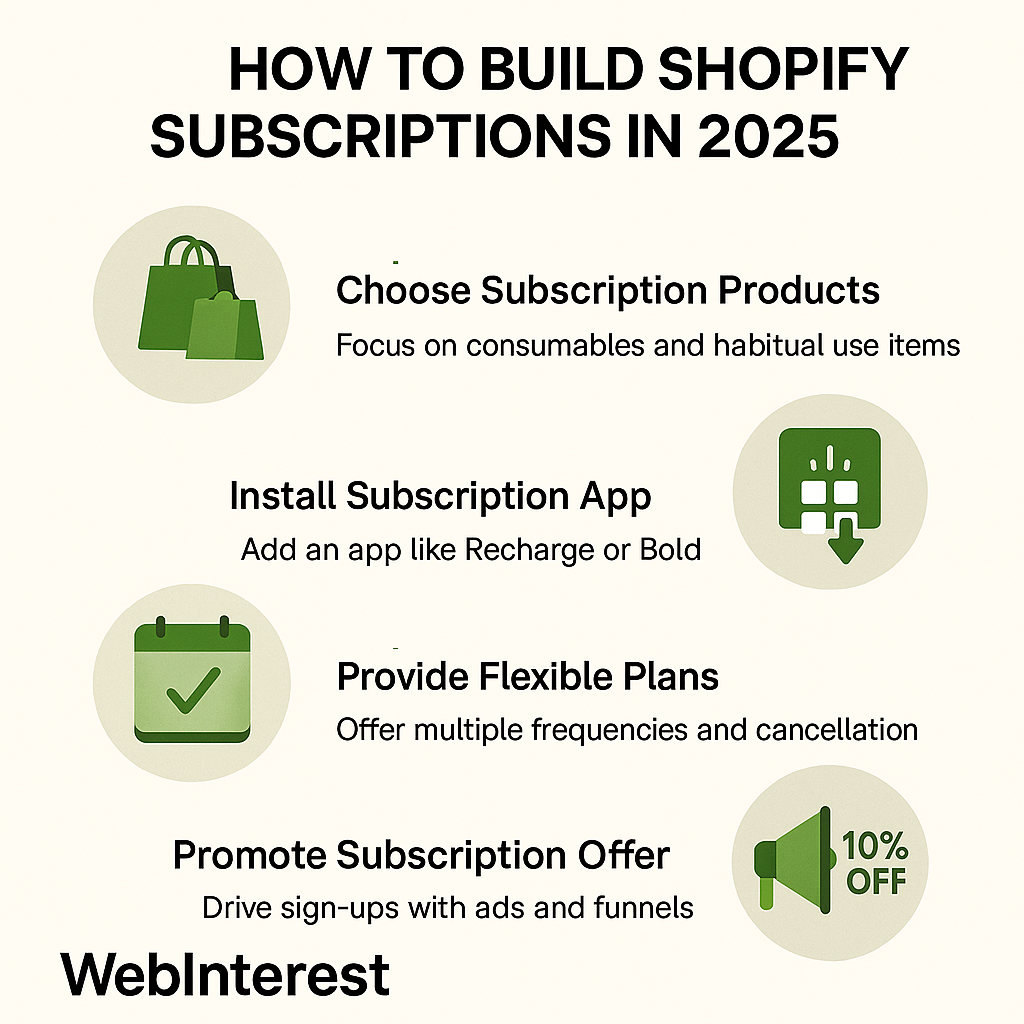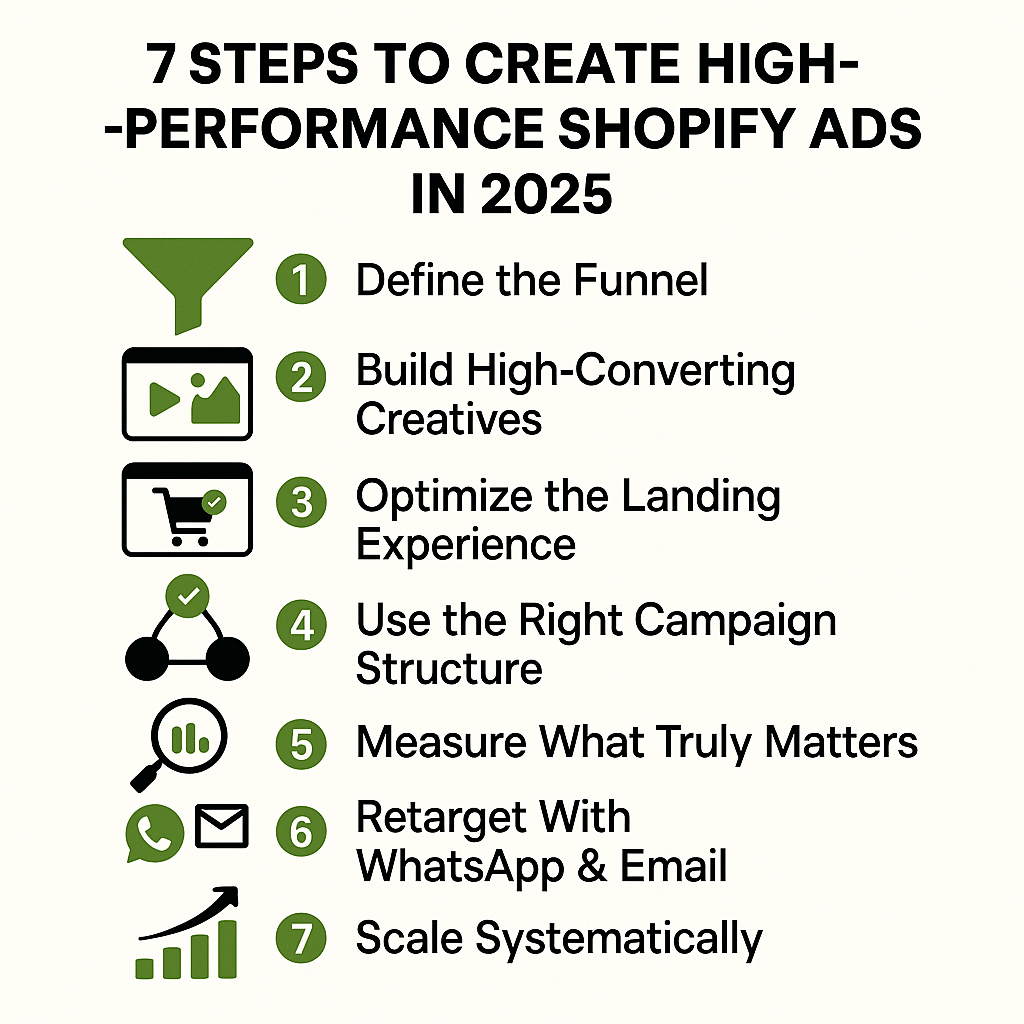
Shopify Analytics Deep Dive: How to Use GA4 and Heatmaps to Improve Sales
Most D2C founders know their total revenue, ad spend, and ROAS — but few truly understand where customers drop off, what pages convert best, or which marketing channels actually drive profit.
In 2025, with rising ad costs and growing competition, data is no longer optional — it’s your growth engine.
At WebInterest, we help Indian Shopify brands go beyond vanity metrics and use analytics tools like GA4, Shopify Reports, and Heatmaps to uncover exactly what drives conversions.
This blog will show you how to transform raw data into actionable insights that grow your Shopify store’s revenue.
Why Analytics Matter for Shopify
-
Reduce Wasted Ad Spend – Identify which traffic sources convert profitably.
-
Optimize User Experience – See where customers drop off in the journey.
-
Increase Conversions – Use real data to fix friction points.
-
Improve Product Strategy – Double down on bestsellers and profitable SKUs.
-
Forecast Sales Accurately – Predict trends and plan inventory with confidence.
Analytics isn’t just about tracking; it’s about turning insights into impact.
Step 1: Set Up Shopify Analytics Correctly
Shopify’s built-in analytics dashboard gives you a quick overview of performance.
Key Metrics to Track:
-
Conversion Rate
-
Add to Cart Rate
-
Average Order Value (AOV)
-
Returning Customer Rate
-
Sessions by Source
Tip:
Segment traffic by paid vs organic vs direct to see which channel drives the most valuable customers.
However, Shopify’s reports are limited — that’s where Google Analytics 4 (GA4) comes in.
Step 2: Integrate GA4 with Shopify
GA4 provides deeper, event-based insights beyond standard Shopify reports.
Steps:
-
Create a GA4 property in Google Analytics.
-
Add your Shopify URL as the data stream.
-
Use Google Tag Manager or the Shopify GA4 app for integration.
-
Verify tracking for page views, add-to-cart, checkout, and purchases.
Important Events to Track in GA4:
-
view_item– Product page visits -
add_to_cart– Items added to cart -
begin_checkout– Checkout initiated -
purchase– Transaction completed
With GA4, you can calculate exact funnel drop-offs — for example, how many customers add to cart but never check out.
Step 3: Use UTM Parameters for Ad Tracking
If you run Meta or Google Ads, UTM tracking is essential.
Example UTM:https://yourstore.com/?utm_source=facebook&utm_medium=cpc&utm_campaign=summer_sale
This helps you:
-
Identify which ad campaigns generate sales.
-
Track ROAS by audience, ad, or creative.
-
Attribute sales accurately between Meta, Google, and WhatsApp.
Without UTMs, your analytics data will always be incomplete.
Step 4: Add Heatmaps for Behavioral Insights
Heatmaps show how users interact with your website — where they click, scroll, and exit.
Best Tools:
-
Hotjar – Easy to use, visual interface.
-
Microsoft Clarity – Free and integrates with GA4.
Key Insights Heatmaps Provide:
-
Identify dead zones (ignored sections of your page).
-
Optimize CTA placement and button colors.
-
Understand how far users scroll on mobile.
-
Detect friction points in checkout or landing pages.
For Shopify stores, we recommend installing heatmaps on:
-
Homepage
-
Product Pages
-
Checkout Page
-
Landing Pages from Ads
Step 5: Analyze Conversion Funnels
Once data is collected, analyze where customers drop off.
Example Funnel:
-
Product Page Views – 10,000
-
Add to Cart – 2,000
-
Checkout Started – 1,200
-
Purchase – 600
This means you’re losing 1,400 customers between checkout and purchase.
With WhatsApp reminders, optimized checkout pages, or better prepaid offers, you can recover many of those.
Step 6: Build Custom Dashboards
For serious growth tracking, go beyond Shopify’s default dashboard.
Tools:
-
Google Looker Studio (formerly Data Studio)
-
Triple Whale
-
Northbeam
These tools combine Shopify, GA4, Meta, and ad data into one live dashboard showing revenue, CAC, and ROAS in real time.
At WebInterest, we design custom dashboards for founders to track daily performance, retention, and profitability at a glance.
Case Study: Homeware Brand Increases Conversions by 41%
A cookware brand approached us with high traffic but poor conversions.
What We Did:
-
Installed GA4 + Clarity
-
Discovered users weren’t scrolling past mid-page on product pages.
-
Moved reviews and offers higher up the page.
-
Simplified checkout flow.
Result:
-
Conversion Rate: 1.8% → 2.6%
-
Bounce Rate: Down 22%
-
ROAS: Increased from 3.1x → 4.4x
All achieved by analyzing and acting on data.
How WebInterest Helps Shopify Brands With Analytics
We offer end-to-end analytics setup and optimization:
-
Shopify + GA4 + Meta Pixel integration
-
Heatmap and behavior analysis
-
Conversion funnel reporting
-
Custom Looker dashboards
-
Actionable CRO recommendations
Our mission is simple — to turn your data into decisions that drive revenue.
Conclusion
In 2025, data will be the single biggest differentiator between growing D2C brands and struggling ones.
While most founders rely on gut feeling, the smartest ones use Shopify analytics, GA4 insights, and heatmaps to understand exactly what works — and then scale it.
Stop guessing. Start measuring.
Ready to Transform Your Shopify Data Into Profit?
👉 Book Your Free Analytics Audit


